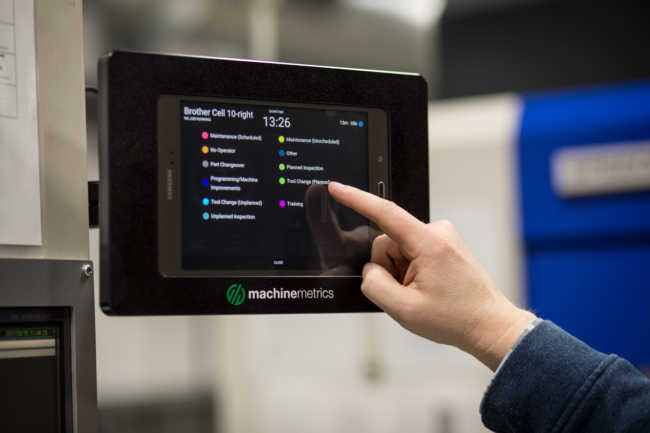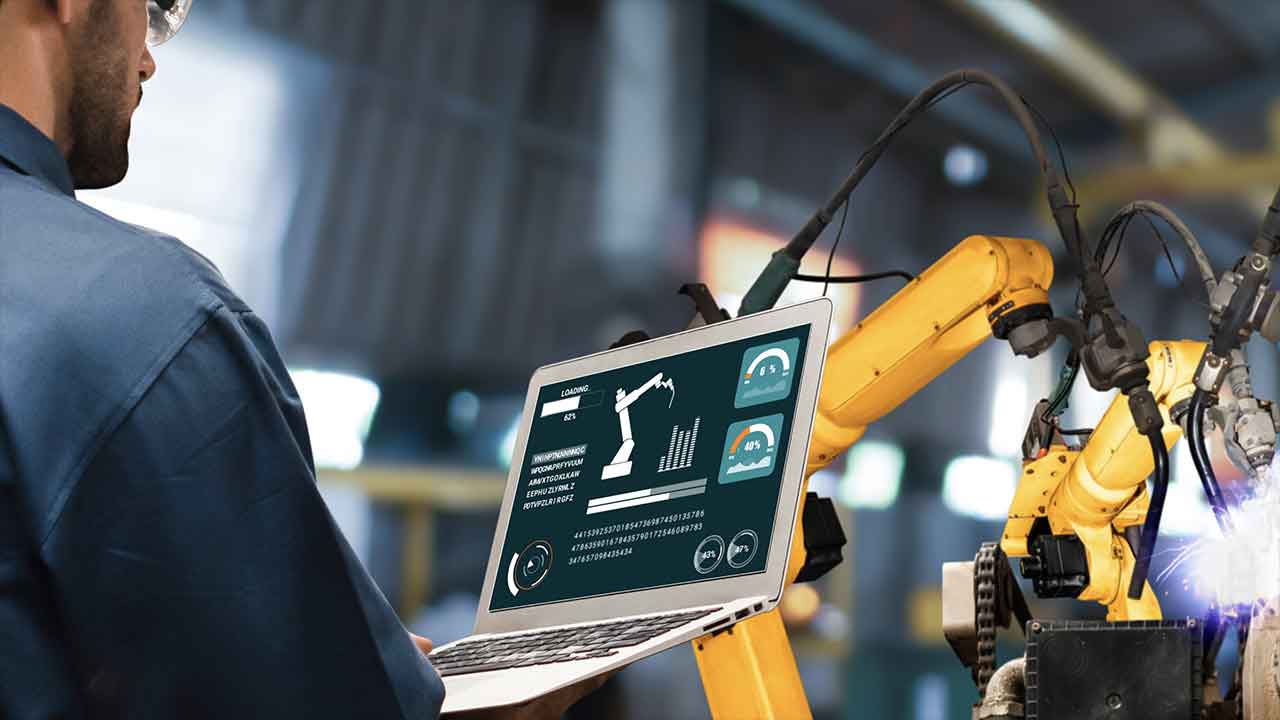Reinventing the IoT Platform for Discrete Manufacturers
The Industrial Internet of Things (IoT) space is hot right now, as manufacturing represents perhaps the largest greenfield opportunity left for digitization. Yet, IoT platform implementations have historically had a high rate of failure within this vertical.
What’s contributing to these failure rates, and what needs to change?
The IoT Platform “Revolution”
The term Industry 4.0 encompasses a promise of a new industrial revolution—for the industrial sector, one that marries advanced manufacturing techniques with the Internet of Things to create systems that are not only interconnected, but communicate, analyze, and use information to drive further intelligent action back in the physical world.
Today is the internet moment for manufacturing, and with it comes the gold rush of providers ready to enable the industry’s digital transformation.
At this point, it would be impossible to work within the manufacturing space and not have spent the past few years bombarded by pitches for Industrial IoT platforms claiming to best support the Industry 4.0 revolution.
These magical platforms market their unique machine learning (ML), artificial intelligence (AI), and edge/cloud/fog technologies to enable the fabled digital transformation of any industry through predictive models, digital twins, and fully-automated workflows.
There are more than 450 IoT platforms to choose from, according to IoT Analytics, and it can be easy to think Industry 4.0 has indeed arrived and manufacturing’s digital transformation is finally at hand. The data, however, tells another story.
IoT implementations have had a historically high rate of failure. Cisco produced a report of survey results indicating that companies considered 76 percent of their Industrial IoT initiatives failures. This has led to greater hesitation on the part of manufacturers to embark on digital transformation journeys.
So what’s driving companies to fail at such a high rate when a majority said that IoT initiatives looked good on paper?
We explore some of the organizational causes in our eBook Why Industrial IoT Projects Fail. In this post, however, we focus on the story’s technology component and IoT platforms specifically, with the goal of both identifying and proposing a solution to manufacturing’s platform problem.
The Platform Problem
There are many different types of IoT platforms, including application enablement platforms, device management platforms, analytics platforms, and others.
In July 2019, Gartner published its first-ever 2018 Magic Quadrant for Industrial IoT, which included companies that provide IoT platforms that work in multiple verticals. No company crossed Gartner’s bar for execution, however, and no one made it above the midway horizontal line (indicating a strong ability to execute). This demonstrates that successful execution and value attainment is elusive.
The challenge with a platform is that it can be time-consuming and expensive to implement and deploy. The investment required to be trained on the platform, and model and build the initial applications and solutions that generate value for the customer, can be prohibitive.
When evaluating return on investment (ROI), use cases, and not the underlying platforms, ultimately drive value. Since most generic IoT platforms can’t deliver packaged manufacturing use cases in the form of services, applications, or solutions by themselves, the onus of enabling a use case using an IoT platform falls on the customer or systems integrator.
Many manufacturing transformation leaders have struggled with determining a tangible and acceptable ROI from their IoT platform investments. More often than not, their projects go over budget, deployment times run long, interoperability issues occur across legacy systems, or planning and resources aren’t allocated appropriately. This all leads to a disappointing ROI, or even cancellation of the initiative.
The Discrete Manufacturing Challenge
Manufacturing has several unique challenges that are difficult to address with generic IoT platforms.
Data Variety
Not only are there many distinct types of equipment—Lathes, Mills, Plastic Injection Molding, Stamping, Laser Cutters, Robotics—but depending on the mechanisms available for acquiring data from those systems, the data points can be diverse. To provide effective tools for analyzing that data across distinct systems, the data must be transformed into a common data model.
Data Volume
Manufacturing equipment, and discrete manufacturing equipment in particular, is very complex. A machine is a large system of components that work in coordination, resulting in hundreds of distinct data points that change constantly.
Depending on the IoT application in manufacturing, there may be situations where it’s required to capture data at rates of 100Hz or 100KHz. Platforms consuming this must analyze data at multiple levels within the system to avoid sending and storing unnecessary data, when only the aggregate or computed result is sufficient.
These systems must be capable of performing complex processing where it’s most appropriate—at both the edge and in the cloud.
Data Speed
While some systems can provide value with low fidelity and high latency, certain IoT use cases require much more real-time data to be effective. Edge technology is required to process high volumes of data, make decisions in milliseconds or less, and act to potentially prevent damage to the machine or the work piece.
Number of Disparate Systems
Integrating legacy systems is a complex task. Having robust data models for each application serving the vertical are required to adequately capture events. Furthermore, having a deep understanding of how the data from each of those systems interact within manufacturing is also necessary to be able to make correlations and provide coherent analysis for process improvement.
IT Infrastructure
Highly elastic and scalable systems are a new entrant to manufacturers and their IT organizations. Due to the intense processing and storage requirements of IoT, it can be prohibitively costly to over-provision a system for peak load at all times.
Utilizing secure cloud systems with virtual hardware architectures programmed to be highly available, scalable, and fault tolerant with multiple data centers separated geographically for disaster recovery are even more important when considering the value that a successful IoT initiative can bring an organization.
With the complexity introduced by these challenges, it should be no surprise that generic IoT platforms often fall short when it comes to manufacturing.
Limitations of On-Premises Packaged Applications
Currently, manufacturers have options to embrace data-driven manufacturing other than IoT platforms. Instead of building out applications and solutions that meet specific needs using a platform, manufacturers often opt to buy a packaged application or solution, or hire a third-party to build a solution for them leveraging various platforms, tools, and technologies.
These packaged applications and solutions have proliferated the market for decades, and the primary benefit is time to value. They can be set up quickly at a relatively lower cost and rapidly drive incremental value.
One disadvantage of packaged applications and solutions is the customer must adapt their processes to conform to the software. Packaged applications and solutions can also be difficult to customize, extend, and integrate with the many disparate systems that exist in a manufacturing facility.
The customization of packaged applications and solutions, along with customized integrations to other disparate applications and systems across the manufacturing enterprise, can create a maintenance nightmare and has resulted in a state of paralysis at many global manufacturers.
These issues are a few of many that have led to the opportunity we see today in the market for something better.
A New Hope Emerges
When it comes to IoT Platforms, most research shows there has been more failure than success. In today’s rapidly changing manufacturing global ecosystem, leveraging a generic IoT Platform is about as good as building one yourself, and anyone who has tried to build one from scratch most likely knows the time, difficulty, cost, and ultimately unlikely success of this endeavor. This indictment of generic IoT platforms should not be interpreted to mean that digital transformation initiatives that leverage IoT technology are not worth investing in, we just believe there’s a better way.
In the end, discrete manufacturers invest in IoT platforms to answer four basic questions:
- What’s happening?
- Why is it happening?
- What’s going to happen next?
- What can I do about it?
To properly answer these questions and deliver business value, one needs to understand their data within the context of their own operations. Answering these questions requires a singular focus on the vertical in order to realize the immediate and continuous value promised when undertaking an Industry 4.0 digital transformation initiative.
At MachineMetrics, we provide a vertically integrated IoT Platform for Manufacturers. Our solution provides an intuitive and flexible platform to gain real-time visibility of production and digitize and enhance legacy processes, unlock the power of shop floor data from insight into action to drive more profitability with your manufacturing equipment.
Our out-of-the-box apps provide the necessary rapid value creation for implementations to break free of the standard “pilot purgatory,” as C-level executives have been able to achieve ROI numbers that justify larger roll-out plans, while shop floor workers are simultaneously experiencing the benefits of real time visibility and automation.
But, for manufacturers, digital transformation requires more than just pre-built applications. APIs can be leveraged to further extend data upstream or downstream to other shop floor systems such as BI, ERP, etc. for more integrated solutions. Thus, the time to value and need for customization is greatly reduced, empowering companies to drive rapidly drive new process optimizations across their organizations through integration with other best-in-breed systems.
This approach provides manufacturers the opportunity to buy-and-build a complete solution across the entire manufacturing stack that is vertically integrated for their business, flexible for changes in business processes, and easily updated and maintained through cloud deployments.
Only by incorporating this approach can an IoT platform deliver real business impact for discrete manufacturing. Without it, most of them will continue struggling to deliver on the promise of Industry 4.0.
To find out more, download the “Reinventing the IoT Platform for Discrete Manufacturers” white paper written by Machine Metrics.
 This article was written by Graham Immerman, Director of Marketing for MachineMetrics, a venture-backed manufacturing analytics platform. Graham has quickly become an authority on digital transformation and the application of IIoT technology for the manufacturing industry.
This article was written by Graham Immerman, Director of Marketing for MachineMetrics, a venture-backed manufacturing analytics platform. Graham has quickly become an authority on digital transformation and the application of IIoT technology for the manufacturing industry.



